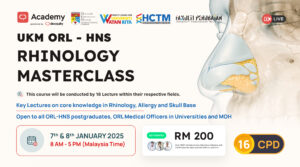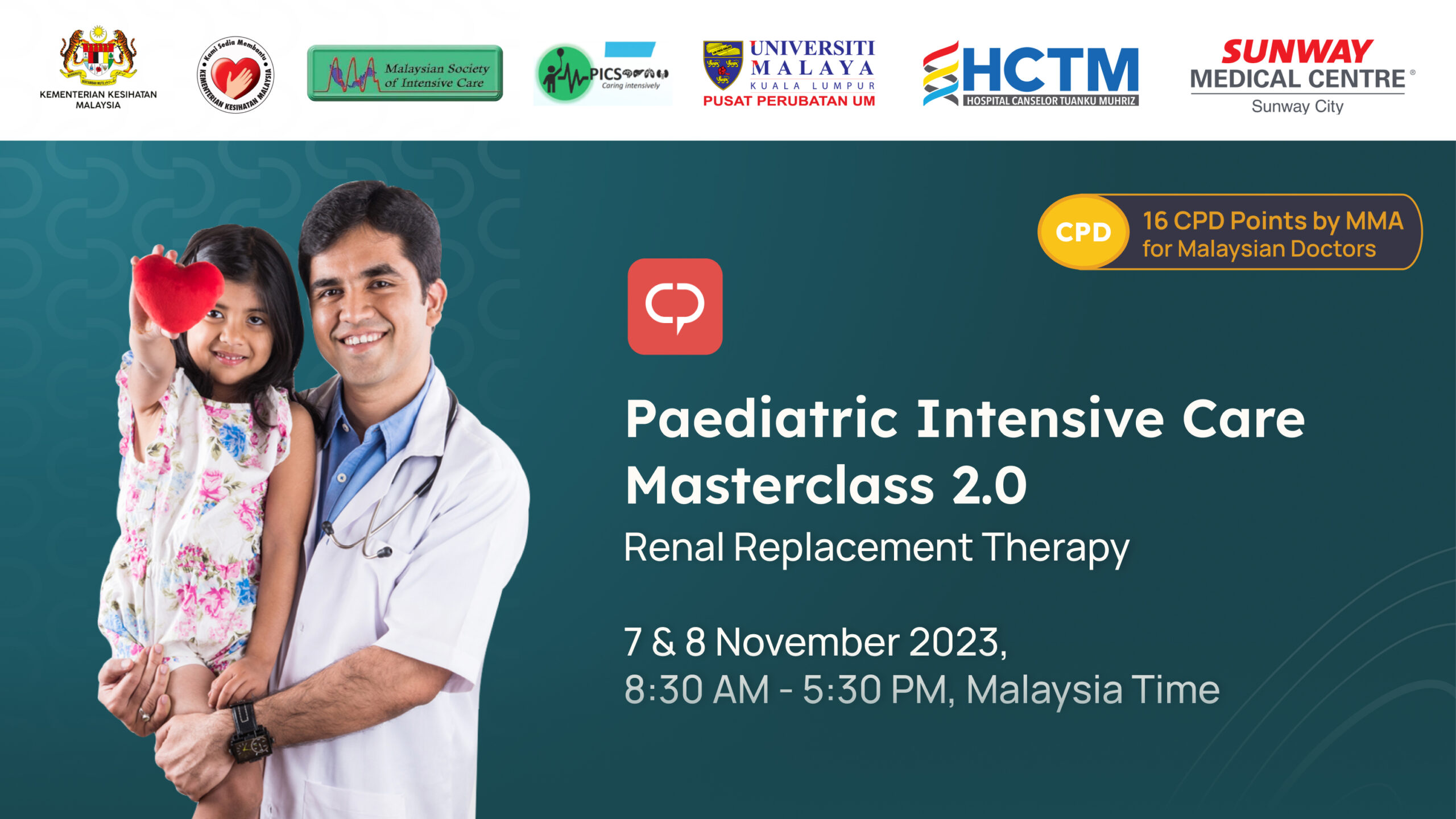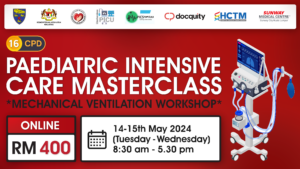
Paediatric Intensive Care Masterclass, Renal Replacement Therapy in Critical Care
Paediatric Intensive Care Masterclass, Renal Replacement Therapy in Critical Care
Explore Renal Replacement Therapy in Pediatric Critical Care. Masterclass for life-saving expertise.

Overview of the paediatric intensive care masterclass, renal replacement therapy in critical care course.
The Paediatric Intensive Care Masterclass on Renal Replacement Therapy equips healthcare professionals with vital skills for managing kidney-related issues in critically ill children, ensuring comprehensive care in high-stakes situations.
This training is intended for the following participants.
Why they should attend: Pediatric intensivists are at the forefront of caring for critically ill children. Attending this course equips them with advanced knowledge in renal replacement therapy, enhancing their ability to manage renal issues effectively and improving patient outcomes.
Why they should attend: Pediatric nurses play a crucial role in delivering day-to-day care in critical care units. This course offers them specialized training to better understand and administer renal replacement therapy, ensuring comprehensive and informed patient care.
Why they should attend: Pediatric nephrologists specialize in kidney-related issues. This course is invaluable for enhancing their expertise in the context of critical care, helping them provide specialized care to children with renal complications.
Why they should attend: Pediatric surgeons often work closely with critically ill children, especially in cases requiring surgical interventions. Understanding renal replacement therapy is essential for their holistic approach to care, as kidney issues may accompany other surgical conditions.
Why they should attend: Respiratory therapists manage ventilator support and oxygen therapy, which are closely linked to renal function in critically ill children. Attending this course enables them to optimize respiratory care in tandem with renal replacement therapy.
Why they should attend: Pediatric anesthesiologists play a vital role in stabilizing children before surgery. Knowledge of renal replacement therapy is essential for minimizing complications during surgical procedures and post-operative care.
Why they should attend: As future healthcare providers, attending this course can help medical students and residents build a strong foundation in pediatric critical care and renal replacement therapy, preparing them for their future roles in healthcare.
What will you learn from this course?
Acute Kidney Injury (AKI) in Children.
The Paediatric Intensive Care Masterclass covers Acute Kidney Injury (AKI) in children, emphasizing Renal Replacement Therapy in Critical Care. Explore etiology, diagnosis, and advanced management strategies in a concise, comprehensive module.
Continuous Kidney Replacement Therapy (CKRT) Access, membrane and circuit.
Continuous Kidney Replacement Therapy (CKRT) utilizes vascular access, a specialized membrane, and a circuit for renal support. Access options include central venous catheters or arteriovenous fistulas. The membrane, typically a high-flux filter, facilitates solute removal. The circuit involves a pump, filter, and tubing, maintaining a continuous flow for efficient blood purification in critical care settings.
CKRT Modality, prescription and dose.
Continuous Kidney Replacement Therapy (CKRT) modalities, prescriptions, and doses are tailored to individual patient needs. Modalities include Continuous Venovenous Hemofiltration (CVVH), Hemodiafiltration (CVVHDF), and Hemodialysis (CVVHD). Prescriptions specify parameters like fluid removal rates, replacement fluids, and anticoagulation. Doses are adjusted based on the patient's condition, with typical ranges for effluent flow (25-35 mL/kg/h) and duration (24/7 or intermittent). Precise adjustments ensure optimal renal support in critically ill patients.
Choice of anticoagulation in CRRT.
In Continuous Renal Replacement Therapy (CRRT), the choice of anticoagulation is crucial to prevent circuit clotting. Options include systemic anticoagulation with heparin, regional citrate anticoagulation (RCA), or no anticoagulation (using a clotting filter). Heparin is common but poses bleeding risks. RCA is an alternative, binding calcium in the extracorporeal circuit. The choice depends on patient factors, contraindications, and the CRRT modality. Individualized decisions balance clot prevention and bleeding risk.
How to optimize the circuit life.
Optimize Continuous Renal Replacement Therapy (CRRT) circuit life: choose suitable anticoagulation, monitor parameters, select filters wisely, control blood flow, maintain aseptic technique, assess and adjust, and ensure expertise in the healthcare team.
Recognizing and managing complications and trouble shooting in CKRT.
Manage CKRT complications: address hypotension with fluid adjustments, handle electrolyte imbalances, control bleeding by modifying anticoagulation, address filter clotting promptly, combat infection with aseptic measures, and troubleshoot access issues for optimal outcomes.
CRRT in liver failure.
Continuous Renal Replacement Therapy (CRRT) in liver failure helps manage complications like fluid overload and electrolyte imbalance, supporting hemodynamic stability. Adjustments in anticoagulation and fluid balance are crucial for optimal outcomes.
Renal replacement therapy in metabolic disorder.
Renal Replacement Therapy (RRT) plays a vital role in managing metabolic disorders by addressing electrolyte imbalances and removing toxic metabolites. Tailored RRT strategies help maintain metabolic equilibrium, supporting patients with conditions like inborn errors of metabolism.
CRRT in septic shock.
Continuous Renal Replacement Therapy (CRRT) in septic shock serves a crucial role by managing fluid balance, removing inflammatory mediators, and supporting hemodynamic stability. It aids in mitigating the impact of renal dysfunction in sepsis, contributing to improved patient outcomes.
When to stop CRRT?
Stop Continuous Renal Replacement Therapy (CRRT) when renal recovery occurs, hemodynamic stability is achieved, fluid balance is optimal, the underlying cause resolves, and overall clinical improvement aligns with patient preferences. Regular reassessment guides individualized decisions.
Drug dosing in CKRT.
Adjust drug dosing in Continuous Kidney Replacement Therapy (CKRT) by considering drug properties, patient factors, and filter characteristics. Regular monitoring and dose titration are crucial for optimal therapeutic outcomes.
Nutrition in CKRT.
In Continuous Kidney Replacement Therapy (CKRT), tailor nutrition to meet metabolic needs. Monitor protein, caloric intake, and electrolytes. Individualize to optimize patient outcomes and support renal recovery.
Plasma exchange.
Plasma exchange removes pathogenic substances from blood, treating autoimmune disorders, toxins, or organ failure. It involves separating plasma and replacing it with a substitute. Tailored to specific conditions, it aims for immune modulation and toxin removal.
Extra-corporeal tandem therapy in PICU.
In the Pediatric Intensive Care Unit (PICU), extra-corporeal tandem therapy combines techniques like ECMO and CRRT. It offers comprehensive cardiovascular and renal support for critically ill children, optimizing outcomes by addressing multi-system dysfunction.
Peritoneal dialysis in PICU.
Peritoneal Dialysis in the Pediatric Intensive Care Unit provides renal support by using the peritoneum as a natural filter. It's a gentle method suitable for critically ill children, aiding in fluid and toxin removal. Tailor the approach based on individual patient needs for optimal outcomes.
Intermittent hemodialysis in critically ill children.
Intermittent hemodialysis in critically ill children offers renal support by intermittently filtering blood, managing fluid and electrolyte balance. Tailor the approach to individual patient needs for optimal outcomes in the Pediatric Intensive Care Unit.
Toxin and cytokine removal filter (Industry talk).
In the medical industry, advanced toxin and cytokine removal filters are pivotal for extracorporeal therapies. These filters efficiently eliminate harmful substances, addressing systemic inflammation in conditions like sepsis. Continuous innovation in filter technology enhances their efficacy, contributing to improved patient outcomes and advancing critical care practices.
What did the participants say about this course?
I would like to express my heartfelt thanks to Docquity for delivering such a concise & informative course and also for organising this amazing course opportunity towards bettering and refreshing ourselves. Looking very forward to future courses from Docquity.

Dr. Michelle Lee
Know your instructor
Instructors for the "Paediatric Intensive Care Unit Masterclass 2.0: Renal Replacement Therapy In Critical Care" webinar are an esteemed panel of 15 highly experienced doctors who bring a wealth of knowledge and expertise in pediatric critical care. With backgrounds in various specialties, they collectively offer a comprehensive perspective on renal replacement therapy in critical care for pediatric patients. Rest assured, you will be learning from the best in the field, ensuring a rich and insightful educational experience.
Frequently Asked Questions






